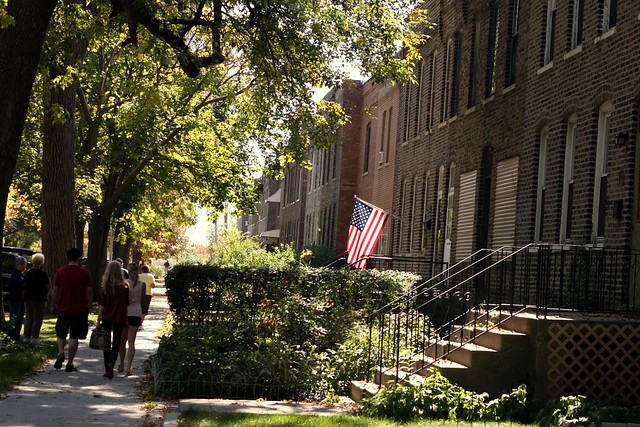It’s always a chuckle to read DNAinfo.com columnist Mark Konkol’s misguided musings on transportation issues.
When the city installed protected bike lanes on Kinzie, in front of the Sun-Times office where Konkol worked at the time, he wrote a series of articles blasting the PBLs as “bunk” that caused gridlock for drivers. “They’re a giant waste of money that probably don’t protect anybody,” he fumed. “Not bicyclists. Not drivers. Not pedestrians.”
Actually, a city traffic study found that, because the bike lanes helped to better organize car traffic, rush-hour travel times for drivers generally improved after the PBLs went in. Meanwhile, morning rush-hour bike ridership increased by 55 percent. And, while we don’t have safety stats for Chicago's protected lanes yet, a study found that New York’s 9th Avenue PBL led to a 56 percent reduction in crashes for all road users.
More recently, Konkol blamed protected lanes, as well as a bike-share station, for the temporary closure of his favorite eatery, River West’s Silver Palm. “The addition of protected bike lanes and a Divvy bike station coupled with Milwaukee Avenue construction gobbled customer parking spots and had shooed diners away,” he wrote in a DNA piece. In fact, the Divvy station was installed on the sidewalk, so it eliminated zero car parking, while adding 12 bike parking spaces that the restaurant’s customers can use.
Since Konkol had previously claimed that Divvy stations can drive merchants out of business, it was amusing to read yesterday that he’s bummed that bike-share hasn’t come to his neighborhood yet. That complaint was included in a column arguing that many affluent Chicagoans don't understand the challenges faced by people in low-income, high-crime areas.
That’s a worthwhile topic, but Konkol approached it in a dubious manner. First of all, he conflates the Pullman Historic District, the picturesque, safe, middle-class-and-gentrifying enclave where he lives, with the besieged communities that surround it. “If I’m honest, living there… has always been something of a struggle,” he writes.
This summer, instead of spending his vacation money on a long beachfront getaway, he subleased a $2,440 a month condo in Streeterville. Ironically, he used that experience to write a “Tale of Two Cities”-style narrative, preaching about how privileged his North Side neighbors were.

Much of the column focuses on his own supposed hardships as a Pullman resident. “It’s the struggle for simple things that people in fancier parts of Chicago take for granted more than the threat of violence or the depression of poverty that can wear a guy down,” he stoically writes.
Konkol says that, before a Wal-Mart recently opened in the neighborhood, there was nowhere within a short drive of Pullman to buy quality groceries and produce. Actually, there was. He also laments that there’s still no place within walking distance that makes a good brunch (there is) or craft beer (that too).
Most interesting for Streetsblog readers is his claim that Pullman, located on the Far South Side, is underserved when it comes to transportation. I was pleased to read that the guy who blamed Divvy for keeping him away from the Silver Palm’s “Three Little Pigs” sandwich found bike-share to be useful when he lived in Streeterville, and now wants it in his own neighborhood.
“In a pinch, I can even rent a Divvy bike [in Streeterville] to speed up my trip to a [transit] station,” he writes. “By the looks of things, Divvy will make it to Pullman sometime in 2020, if at all.” Considering that this year’s planned expansion of the system was postponed, that may be a realistic prediction.
Konkol accurately notes that it’s a whole lot easier to catch a cab in Streeterville than Pullman, and that the historic district is three miles from the nearest ‘L’ stop. But his characterization of his neighborhood as a transit desert is a stretch.
“Don’t get me started on the Metra stations between 103rd and 115th that could double as horror movie locations,” he grouses. Sure, the Metra stations are a little scruffy, and non-rush hour service could be more frequent. But all homes in the historic district are a short walk from the train, and from there it's a comfy half-hour ride to the Loop.
That makes the enclave a fairly convenient place for downtown workers who don't own cars, which is a reason I once considered moving there myself. The district is also served by the CTA’s Cottage Grove and 115th buses, as well as a CTA shuttle to the shopping center that houses the Wal-Mart.
All told, the "struggles" Konkol says he faces as a Pullman resident are pretty laughable. There's certainly much that needs to be said about economic and social inequality in Chicago. However, a guy who complains about how underserved his community is -- when he’s actually got it pretty good -- isn’t the one to say it.





